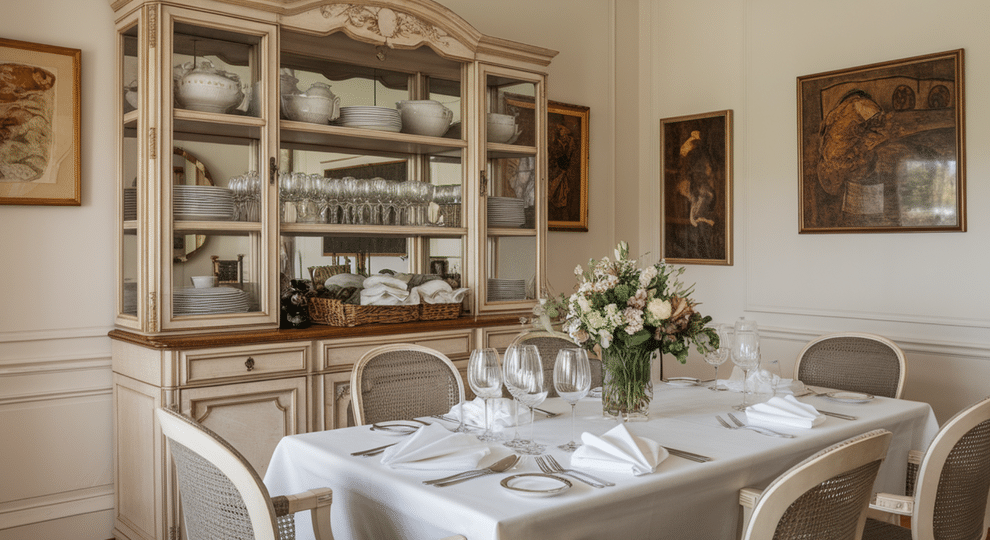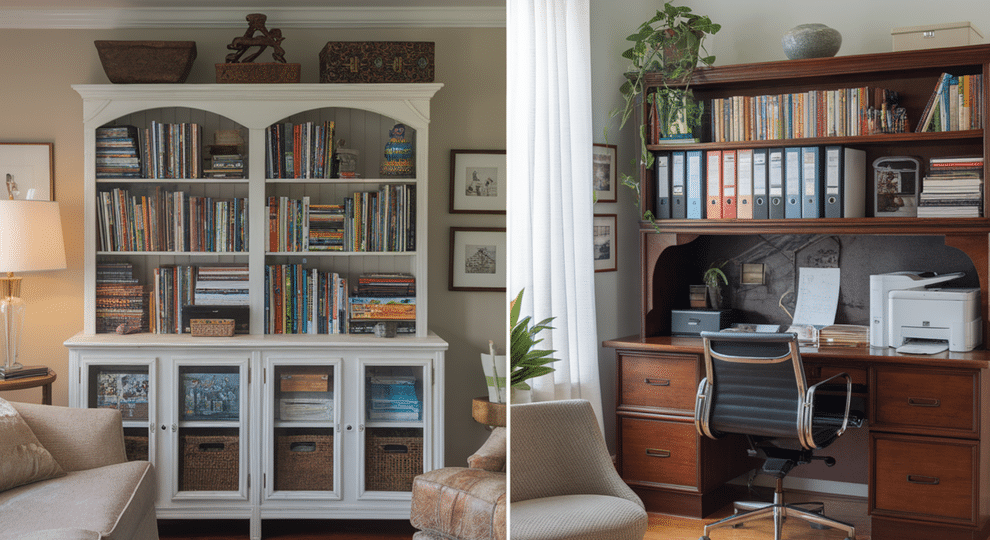I used to see the word tossed around in furniture listings and home magazines, but I never really stopped to ask: what is a hutch?
It felt like something I should know, but the meaning wasn’t obvious. Was it for storage? Was it for display? Or was it something else completely? That small question stuck with me.
If you’ve wondered the same thing, this guide will clear things up.
You’ll find out exactly what a hutch is, what it looks like, and how it’s used in today’s homes. I’ll also walk you through how to choose one that fits your space and needs.
By the end, you’ll understand what makes a hutch different and why it might be the missing piece your room needs.
Why the Word “Hutch” Can Be Confusing at First
The word “hutch” can be confusing because it has multiple meanings.
Some people think of it as a type of furniture you use at home, like a cabinet with shelves, often placed in kitchens or dining rooms.
Others might think of a small animal shelter, especially for rabbits. In older English, it was also used for things like chests or storage boxes. So it’s easy to get mixed up if you don’t know which meaning someone is using.
But today, most people use the word to talk about home furniture.
What is a Hutch?

A hutch, in furniture terms, is a piece made of two main parts. The bottom is a cabinet or a set of drawers, this is where you store things.
On top sits a shelving unit, often open or with glass doors. That’s where people usually show off dishes, books, or decorations.
You’ll often see hutches in dining rooms or kitchens. They’re helpful because they give you both storage and display in one piece. You can keep plates, cups, or linens below, and use the top to make things look nice or easy to reach.
Even though “hutch” can also mean a small shelter for animals like rabbits, or older storage boxes from history, this furniture version is what most people mean today.
We’ll talk about the other meanings later, but for now, just know: a hutch is a smart and useful piece of home furniture.
Key Characteristics of a Hutch
A hutch is known for being practical and easy to fit into different spaces at home. It has some clear features that make it stand out from other furniture.
Here are the key characteristics of a hutch:
- Two sections: a base cabinet and an upper shelf unit
- Used for storage and display
- Tall and space-saving
- Made mostly from wood
- Often includes glass doors or open shelves
- Can have drawers, doors, or both in the base
- Comes in many styles: modern, rustic, or classic
- Used in kitchens, dining rooms, living rooms, and more
These traits make hutches a smart choice for anyone needing extra storage without giving up style or space.
How a Hutch is Used in Today’s Homes
A hutch isn’t just an old-style piece your grandma had. Today, it’s used in smart and creative ways all over the house. Let’s look at how people use hutches now, not just for storage, but to add function and style too.
Kitchen Uses

In the kitchen, a hutch can be a real helper. You can use the bottom part to store pots, pans, or small appliances.
The top shelves are great for dishes, cookbooks, or even spices. Some people also use it to keep their fancy plates safe but easy to grab when needed.
Dining Room Uses

This is the most common spot. In dining rooms, hutches often hold tablecloths, napkins, and serving dishes in the bottom.
The top shelves show off glassware, china, or decorations. It helps keep the table clear and the room looking neat.
Living Room and Office Uses

In living rooms, hutches can hold books, games, or electronics. You can also add baskets to keep it organized. In home offices, a hutch can store office supplies below and hold books, printers, or files above.
It keeps things tidy but is still easy to reach.
Trending Modern Uses

Hutches are getting a fresh look in today’s homes. People turn them into:
- Coffee bars: with mugs, a coffee maker, and flavors all in one spot
- Storage stations: for keys, mail, and chargers near the entryway
- Pantry alternatives: where space is tight, a hutch can hold dry goods, snacks, and jars
These new uses show that hutches are more than just for display; they’re useful and flexible for many spaces in the home.
How to Choose the Right Hutch for Your Space
Choosing the right hutch means thinking about both space and purpose. Start by measuring the area where you want to place the hutch.
Make sure to check the height too, since hutches can be tall. A hutch that’s too big can make a room feel crowded, while one that’s too small might not give you the storage or display space you need.
Next, think about how you plan to use it. If you need storage, look for one with cabinets, drawers, or closed shelves. If you want to display dishes, books, or decorations, a hutch with glass doors or open shelves is better.
Style matters too. Try to match the hutch to your room’s look. A simple design fits in most spaces, while something more detailed adds a traditional feel.
Color and wood type also affect how it looks in your home. Make sure it fits your style and needs.
Hutch vs. Other Storage Furniture
When you’re choosing storage furniture, it helps to know how a hutch compares to other common pieces like buffets, cabinets, and bookshelves. Each one has its own purpose, design, and best room fit.
| Furniture Type | Main Use | Typical Location | Key Features |
|---|---|---|---|
| Hutch | Storage + display | Kitchen, dining, office | Two-part unit, top shelves, tall |
| Buffet | Storage only | Dining room | Low, wide, no top shelving |
| Cabinet | Storage | Any room | Closed doors, various sizes |
| Bookshelf | Display only | Living room, office | Open shelves, no closed storage |
| Sideboard | Serving + storage | Dining or living room | Similar to a buffet, often with drawers |
Knowing the differences helps you pick what works best for your space and what you need it to do.
Care and Maintenance Tips for Your Hutch
Taking care of your hutch helps it last longer and look nice. With a little regular attention, you can avoid damage and wear over time.
- Dust it weekly with a soft, dry cloth
- Wipe spills right away to prevent stains
- Use mild soap and water, never harsh cleaners
- Avoid too much moisture to keep the wood from warping
- Keep it out of direct sunlight to stop fading
- Use coasters or mats under items to prevent scratches
- Check and tighten screws or handles every few months
- Don’t overload shelves to avoid sagging
- Polish it a few times a year to keep the finish looking fresh
With these simple steps, your hutch will stay strong, clean, and ready to use for years to come. A little care goes a long way.
Conclusion
Now that I’ve broken it down, I finally understand what a hutch is and why it confused me for so long. It’s not just a cabinet or a shelf: it’s a two-part piece that blends storage and display in a smart, useful way.
If you’ve been unsure too, I hope this helped clear things up. You can now spot a hutch, know where it belongs, and even figure out how to choose one that works for your space. Don’t forget the simple care tips to keep it looking great.
Take a moment to look around your home. Is there a spot where a hutch could help?
Want to keep learning? Browse the other blogs for more easy-to-understand tips on home furniture and smart setup ideas!














